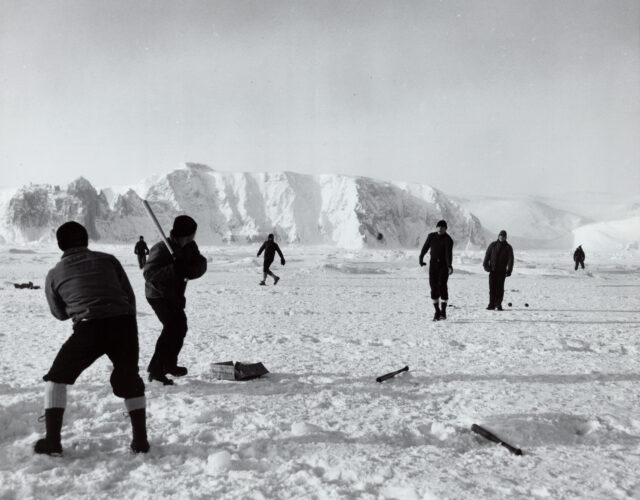The common ice you find in ice cubes—called ice Ih, or “ice one-h”—is technically a mineral since it is inorganic and has a regular crystal structure. Specifically, its molecules arrange themselves into a lattice of tiny hexagons, a six-fold symmetry that ultimately underlies the shape of snowflakes. Virtually all ice on Earth is ice Ih, and a good thing too! Its spacious hexagons make it less dense than liquid water; so it floats on lakes and estuaries and actually insulates fragile aquatic creatures below, protecting them from wind and chill. Without ice Ih life as we know it wouldn’t exist.
But talking about ice and mentioning only ice Ih is like talking about chocolate and mentioning only Hershey’s. Exotic ices are still made up of H2O, of course, but the individual molecules break free from the hexagon straitjacket and reshuffle. Lots of solids can undergo a similar rearrangement. If you’ve ever opened an ancient Hershey’s kiss and found a tan and chalky cone inside the wrapper, you’ve seen chocolate do just that. (During this “chocolate bloom” the cocoa molecules squeeze together, increasing the chocolate’s density and pushing fat to the surface.) But few solids can form as many distinct “phases” as ice.
Scientists create different phases of ice by subjecting a tiny sample to monstrously high pressures, millions of times higher than atmospheric pressure. And with pressures so high the ice can stay solid at temperatures of thousands of degrees—a true freezer burn. If you could somehow plop chunks of these ices into a glass of liquid water, they’d vaporize it. (Imagine the party tricks.) On a molecular level the high pressure deforms the hexagonal bonds, forcing H2O molecules into rhombuses, tetragons, and other alternative geometries. High pressure can also force H2O molecules to squeeze into the holes at the centers of these shapes, trapping them like bugs in tiny cages. This action increases the density and makes these ices heavy enough to sink in water. At super-high pressures some chemists predict that ice transforms into a metal.
Scientists created the first exotic ices, ice II and ice III, around 1900; the list now extends up to ice XV, discovered in 2009. Creation of these ices is more than an academic exercise. Ice molecules are held together by the same hydrogen bonds that, among other things, hold DNA strands together; so forming new ices helps probe the nature of that bond. What’s more, while ice Ih dominates the biosphere, other ices exist naturally. An ice that’s structurally similar to diamonds, ice Ic, probably exists in the upper atmosphere. The dense, hot interiors of Neptune and Uranus probably contain chunks of nonhexagonal ices, as do exoplanets around distant stars, a potentially important consideration as we search for life beyond our solar system.
In the universe at large, however, ices I through XV are vastly outpopulated by so-called amorphous ice, ice whose molecules arrange themselves randomly, without any crystal structure. Amorphous ice forms in flash freezes in deep space. Microscopic nuggets of this ice also tend to look amorphous since there aren’t enough molecules to hold themselves together in a regular crystal.
That transition from amorphous ice to crystal ice has long intrigued scientists, and some of them have even tried to pin down exactly how many molecules are needed to form genuine crystal ice. That may seem like an unanswerable question—like asking at what point a man losing his hairs one by one becomes bald. But believe it or not, an experiment last fall in Germany actually determined the answer.
The experiment involved slowly adding H2O molecules to a nucleus of sodium atoms and probing what wavelengths of infrared light they absorbed. Amorphous ice showed an absorption peak at a certain wavelength; crystal ice had a peak at a slightly longer wavelength. The shift from one to the other occurred surprisingly quickly. Below 250 molecules the amorphous peak dominated. But at 275 molecules the crystal’s longer-wavelength peak began peeking out as a rudimentary crystal took shape. By 475 molecules that peak alone dominated. So depending on where you draw the line, as little as 0.000000000000000000008 grams of water “counts” as crystal ice.
That’s vastly smaller, of course, than even the rapidly shrinking slivers still left in your glass. They’ll nevertheless soon cross that threshold and wink out of existence. Midnight will chime, and all these fantasies of burning ice, ice that sinks, and metallic ice will evaporate. At least until ice chemists discover the next new wonderful incarnation.




